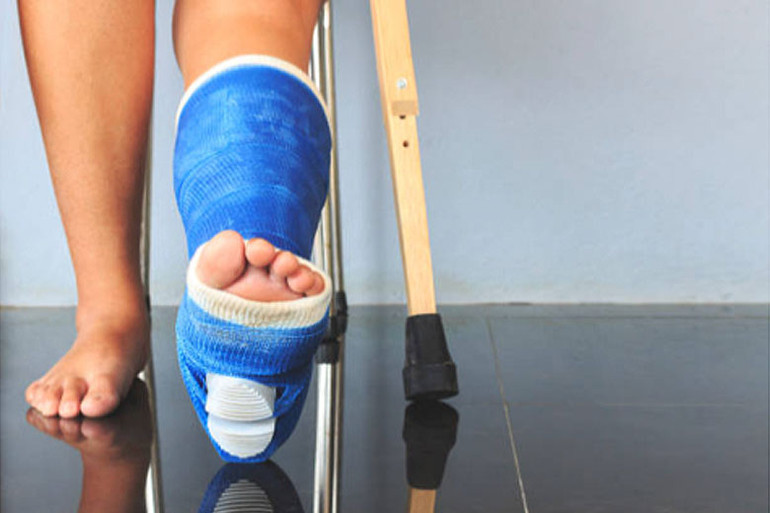The Centers for Advanced Orthopaedics is redefining the way musculoskeletal care is delivered across the region with locations throughout Maryland, DC, Virginia and Pennsylvania.
How To Prevent Issues During Your Post Surgery Recovery Period

If you haven’t been able to find relief from your foot discomfort with conservative techniques, a surgical operation may be in your future. Surgery can help correct a number of different foot issues like bunions, soft tissue tears and nerve entrapment, but the operation itself is only part of the equation. How you handle your recovery period will go a long way in determining the success of your operation. With that in mind, we wanted to use today’s blog to share some tips for how you can manage some of the obstacles you’ll encounter during your rehabilitation period so that you can keep your recovery on track.
Post Foot Surgery Management Tips
You will likely experience at least a few of the following symptoms and conditions as you work to rehab following foot surgery, and it’s important that you are aware of how these obstacles can cause problems for your recovery so that you can navigate them successfully. Here’s what to watch for and how to manage these issues.
Pain - Pain is normal and should be expected following even a minimally invasive foot procedure. Your surgeon will provide you with individualized advice in regards to how to use medications to manage your discomfort, so the only real advice that we’ll give here is to listen to their instructions and take your medications as prescribed. We typically provide enough pain-relieving medication to last you until your first follow-up appointment, at which time we’ll reassess your discomfort and make a plan for managing pain going forward.
- Swelling - Swelling can slow down the healing process, so oftentimes your doctor will recommend that you work to limit swelling by elevating your foot and using ice regularly during the first few days of your recovery. Icing for 15-30 minutes every hour for the first couple days can really help to manage swelling, but be mindful not to apply ice directly to the skin, as this could potentially lead to frostbite injuries.
- Incision Management - It’s also normal to have some light drainage from your incision site, and your doctor will show you how to change your bandages when drainage develops. However, drainage and discharge should slow as you get further into your recovery period. If you notice bloody discharge or your bandages are regularly saturated with drainage after 24 hours, you’ll want to contact your doctor. If drainage is light, change your bandages as directed and monitor the wound site for signs of an infection (redness, foul smelling discharge, warmth, etc.).
- Movement - If you can be partial weight bearing shortly after surgery, you’ll want to be aware of some of the issues you may encounter with your first few steps. If sedatives were used during your operation, you may still be experiencing numbness in your lower body, which could cause balance problems. Nausea and dizziness are also possible issues upon standing, so take things slow as you work to get back on your feet after an operation.
- The Bathroom - Depending on your operation, a Foley catheter may have been placed during surgery for urination. This will be removed prior to discharge, but if you are unable to urinate within 24 hours of discharge, reach back out to the hospital team immediately. Additionally, a common side effect of post-op pain narcotics is constipation, so stay hydrated and eat plenty of fruits and vegetables so that bowel movements aren’t uncomfortable.
- Physical Therapy - Finally, make sure that you follow through with all of your physical therapy exercises during your recovery period. We understand that you may be uncomfortable for all of the reasons listed above, but this recovery period is critical for reestablishing strength and flexibility in the surgically-addressed area. Physical therapy is key to helping you make the strongest functional recovery after foot surgery, so attend your in-person sessions and do your home-based exercises for maximum benefit.
All of these factors will be tailored to your individual needs, and we’ll be here to guide you through your recovery process so that you can experience great results. For more information, or to talk to a specialist about foot symptoms you’re experiencing, reach out to the team at The Centers For Advanced Orthopaedics today at (703) 584-2040.